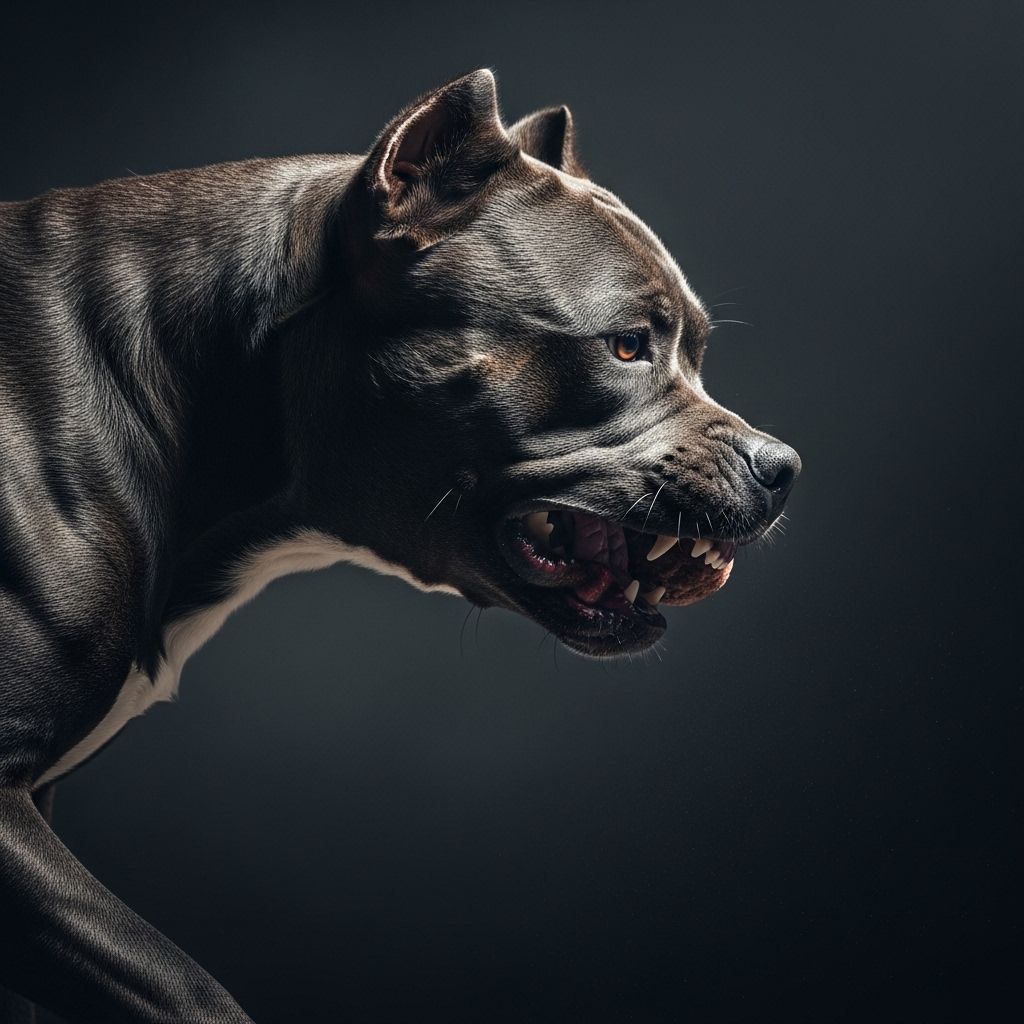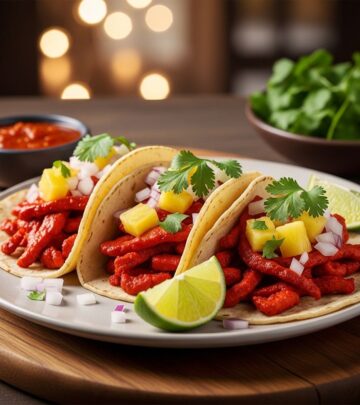Dog Breeds With The Strongest Bite Force: 10 Mighty Powerhouses
Discover which canine companions pack the most powerful jaws and what makes their bite so formidable

Image: HearthJunction Design Team
10 Dog Breeds With the Strongest Bite Force in the World
When it comes to our canine companions, their bite force is an impressive physical characteristic that has evolved over thousands of years. Whether developed for hunting, protection, or working purposes, certain dog breeds possess jaw strength that’s truly remarkable. Understanding which breeds have the strongest bite force isn’t just interesting trivia—it’s important knowledge for potential owners, as these powerful pups often require experienced handlers and proper training.
In this article, we’ll explore the dog breeds with the most formidable bite forces, measured in pounds per square inch (PSI), and delve into what makes these magnificent animals both powerful and, in many cases, gentle companions when properly trained and socialized.
Understanding Canine Bite Force
Before we dive into our list, it’s important to understand what bite force actually means. Bite force is typically measured in pounds per square inch (PSI), which indicates how much pressure is exerted by a dog’s jaws when they bite down. This force is determined by several factors, including jaw muscle size, head shape, and overall body structure.
While wild animals like crocodiles (3,700 PSI) and hippopotamuses (1,800 PSI) still reign supreme in the animal kingdom when it comes to bite force, domestic dogs have impressive capabilities that reflect their evolutionary history and breeding purposes. The average dog has a bite force of around 200-250 PSI, but the breeds on our list far exceed that figure.
The Top 10 Dogs With the Strongest Bite Force
1. Kangal (743 PSI)
The Turkish Kangal holds the title for the strongest bite force among domestic dogs, with an astonishing measurement of 743 PSI. Sometimes referred to as the Anatolian Shepherd, these impressive canines were bred to protect livestock from formidable predators like wolves, jackals, and even bears in their native Turkey.
Despite their incredible jaw strength, Kangals are known for their gentle and loyal nature with family members. They are protective without being aggressive unnecessarily, showing remarkable restraint and intelligence when assessing threats. Their imposing size—typically weighing between 90-145 pounds—combined with their protective instincts makes them excellent guardian dogs.
Kangals require experienced owners who understand their needs for early socialization, consistent training, and plenty of space to roam. These are not apartment dogs by any means, but when properly raised, they form deep bonds with their human families while maintaining their natural protective instincts.
2. Cane Corso (700 PSI)
The Italian Cane Corso ranks second on our list with a bite force measuring approximately 700 PSI. These powerful Molossers have an ancient history as war dogs, guardians, and all-purpose farm dogs in their native Italy. Their name derives from the Latin ‘cohors,’ meaning ‘protector’ or ‘guardian,’ which perfectly describes their primary function throughout history.
Adult male Cane Corsos typically weigh between 99 and 110 pounds, while females weigh between 88 and 99 pounds. Despite their impressive size and strength, these dogs are often described as even-tempered, loyal, and surprisingly affectionate with family members.
Their muscular build and large head contribute to their exceptional bite strength, making them formidable protectors. However, with proper training and socialization from an early age, Cane Corsos can be wonderful family companions. Their natural protective instincts make them excellent watchdogs, but they require an owner who can provide firm, consistent leadership.
3. Dogo Argentino (600 PSI)
With a bite force of approximately 600 PSI, the Dogo Argentino takes third place on our list. Originally bred in Argentina for big-game hunting, including wild boar, these impressive dogs combine strength, courage, and athleticism in their powerful frames.
The Dogo Argentino’s powerful jaw and muscular build make it an incredibly strong breed, but these dogs can be loving companions when properly trained and socialized. Their white coat and athletic build give them a distinctive appearance that sets them apart from other powerful breeds.
These dogs require experienced owners who understand their high exercise needs and strong prey drive. With consistent training and plenty of physical activity, Dogo Argentinos can be loyal, protective family members. However, it’s worth noting that this breed is restricted or banned in several countries due to concerns about their power and potential for aggression if improperly handled.
4. Tosa Inu (550-600 PSI)
The Japanese Tosa, also known as the Tosa Inu, possesses a bite force estimated between 550-600 PSI. These massive dogs were originally bred for fighting in Japan, though today they serve primarily as guardian dogs and companions. They can reach weights of up to 200 pounds, making them one of the largest breeds on our list.
Despite their fighting heritage, properly raised Tosas can be calm, dignified, and loyal companions. However, their immense strength and protective instincts mean they require experienced owners committed to thorough training and socialization. Due to their fighting background, Tosas are banned or restricted in many countries around the world, including the United Kingdom.
These dogs are known for their silent guardian nature—they rarely bark without good reason but will become formidable protectors when their family is threatened. Their combination of size, strength, and protective instincts makes them impressive but challenging companions.
5. Boerboel (450-550 PSI)
The South African Boerboel has a bite force estimated between 450-550 PSI. Their name literally means ‘farm dog’ in Afrikaans, reflecting their primary purpose as guardians of homesteads against predators like lions and other dangerous wildlife. These massive dogs can weigh up to 200 pounds and possess both the strength and courage to face down serious threats.
Despite their intimidating size and strength, Boerboels are known for being affectionate with family members and particularly good with children when properly socialized. Their natural protective instincts make them excellent guardians, but they require firm, consistent training from an experienced owner.
The Boerboel was only officially recognized by the American Kennel Club in 2015, making it a relatively new addition to the roster of recognized breeds. Their imposing appearance and powerful build make them natural deterrents to potential intruders, but their loyal and affectionate nature with family members shows the gentler side of these powerful protectors.
6. Tibetan Mastiff (400-500 PSI)
The ancient Tibetan Mastiff has a bite force estimated between 400-500 PSI. These majestic dogs were traditionally used to protect livestock and property in Tibet, often working independently from their human handlers in harsh mountain conditions.
Weighing up to 150 pounds, Tibetan Mastiffs are not only physically impressive but also highly intelligent. According to legend, these dogs are believed to be the souls of monks and nuns who were not virtuous enough to be reincarnated as humans but too good to be reborn as lower animals.
Tibetan Mastiffs are known for their independence and sometimes stubborn nature. They’re naturally wary of strangers and extremely protective of their families. Their powerful jaws combined with high intelligence can lead to destructive behavior if they become bored or under-stimulated—they reportedly have a particular fondness for chewing wood, which can spell disaster for furniture if these dogs aren’t properly exercised and mentally stimulated.
7. Akita (400 PSI)
The Japanese Akita has a bite force of approximately 400 PSI. Originally bred as hunting and fighting dogs in Japan, these powerful canines have impressive jaw strength that makes them capable of tackling large game and defending against threats.
Akitas are known for their dignity, courage, and loyalty. In Japan, they symbolize good health, happiness, and long life, and are often given as gifts to new parents. Despite their strength, properly raised Akitas can be affectionate family companions, though they tend to be reserved with strangers and may be aggressive toward other dogs if not well-socialized.
These dogs require experienced owners who understand their need for consistent training and early socialization. Their powerful build and strong-willed nature make them challenging pets for first-time dog owners, but those willing to put in the effort will find loyal, protective companions in these dignified dogs.
8. Rottweiler (330 PSI)
The German Rottweiler possesses a bite force of approximately 330 PSI. Often described as the ‘linebackers of the dog world,’ these powerful working dogs combine strength, intelligence, and trainability in their sturdy frames.
Rottweilers were originally used to drive cattle to market and pull carts for butchers, tasks that required both strength and endurance. Today, they excel in roles ranging from police and military work to therapy and service dog duties, showcasing their versatility and intelligence.
Despite sometimes being portrayed as aggressive, well-trained and properly socialized Rottweilers are typically confident, calm, and courageous rather than unduly aggressive. Their natural protective instincts make them excellent guardians, but they’re also known for being affectionate and even playful with family members. Like all powerful breeds, they require owners who can provide firm, consistent leadership along with plenty of exercise and mental stimulation.
9. German Shepherd (238 PSI)
The versatile German Shepherd has a bite force of approximately 238 PSI. While this is lower than some of the breeds on our list, their intelligence, trainability, and work ethic have made them one of the most popular working dogs in the world.
German Shepherds excel in roles ranging from police and military work to search and rescue, guide dog duties, and competitive dog sports. Their combination of physical strength, intelligence, and trainability makes them exceptionally versatile working companions.
These dogs are known for their loyalty and courage, often forming deep bonds with their handlers. They’re typically good with children when properly socialized and can be excellent family dogs for active households that can provide plenty of exercise and mental stimulation. Their protective instincts make them natural guardians, but with proper training, they can accurately distinguish between genuine threats and normal situations.
10. Doberman Pinscher (230 PSI)
Rounding out our top ten is the elegant but powerful Doberman Pinscher with a bite force of approximately 230 PSI. Originally bred in Germany as tax collector guard dogs, these intelligent canines combine strength, speed, and loyalty in their sleek, athletic frames.
Dobermans are renowned for their intelligence and trainability, ranking among the smartest dog breeds. Their natural protective instincts make them excellent guardians, but they’re also known for being affectionate and loyal family companions when properly trained and socialized.
These dogs require both physical exercise and mental stimulation to thrive. Their athleticism and intelligence make them excellent competitors in dog sports like agility and obedience. While they have a reputation for aggression, well-bred and properly raised Dobermans are typically even-tempered and discriminating in their protective responses rather than needlessly aggressive.
Important Considerations About Powerful Breeds
When considering any of the breeds on this list, potential owners should remember that responsible ownership is crucial. These powerful dogs require:
- Early socialization: Exposure to different people, places, and situations from puppyhood
- Consistent training: Firm but positive methods that build trust and respect
- Proper exercise: Both physical and mental stimulation appropriate to the breed
- Secure containment: Appropriate fencing and supervision to prevent incidents
- Responsible breeding: Selecting breeders who emphasize temperament alongside physical traits
It’s also worth noting that while these dogs have impressive bite forces, most are not inherently aggressive. In fact, many breeds with powerful bites were selected for their restraint and ability to use their strength judiciously. The key factor in any dog’s behavior is not its physical capability but rather its training, socialization, and the responsibility of its owner.
Frequently Asked Questions (FAQs)
Q: Does a strong bite force mean a dog is more dangerous?
A: Not necessarily. While dogs with stronger bite forces can potentially cause more damage if they do bite, the likelihood of biting is more related to training, socialization, and individual temperament than to physical strength. Many dogs with powerful bites are known for their stable temperaments and good judgment when properly raised.
Q: Are any of these breeds good family dogs?
A: Many of these breeds can be excellent family companions when properly trained, socialized, and matched with appropriate owners. Breeds like Rottweilers and Cane Corsos are often devoted to their families and can be good with children when raised with them. However, all powerful dogs require supervision around children and proper training for both the dog and family members.
Q: Are these breeds difficult to train?
A: The trainability varies by breed. German Shepherds and Dobermans are highly trainable, while breeds like the Tibetan Mastiff and Kangal can be more independent. All require consistent, positive training methods and clear leadership, but some may be more challenging for inexperienced dog owners.
Q: Do these breeds require special licenses or insurance?
A: This varies by location. Some municipalities have breed-specific legislation that restricts ownership of certain breeds or requires special licensing or insurance. Always check local regulations before bringing home any dog, particularly those from breeds that may be subject to restrictions.
Q: What’s the difference between PSI and bite force?
A: PSI (pounds per square inch) is the unit of measurement used to quantify bite force, which is the amount of pressure exerted by a dog’s jaws when biting. Bite force is measured in PSI, similar to how weight is measured in pounds or kilograms.
While these powerful breeds require responsible ownership, many serve as loyal protectors and beloved family companions when properly trained and socialized. Their impressive physical capabilities reflect centuries of careful breeding for specific working purposes, resulting in dogs that combine strength, intelligence, and often surprising gentleness with their loved ones.
References
- https://www.dogster.com/dog-breeds/dog-breeds-with-the-strongest-bite-force
- https://www.blackburnromey.com/what-dog-has-the-strongest-bite/
- https://www.lawsuit-information-center.com/what-dog-breeds-have-the-strongest-bite.html
- https://worldanimalfoundation.org/dogs/strongest-dog-bite-force/
- https://www.hundeo.com/en/magazine/biteforce-ranking-dog/
Read full bio of Anjali Sayee











